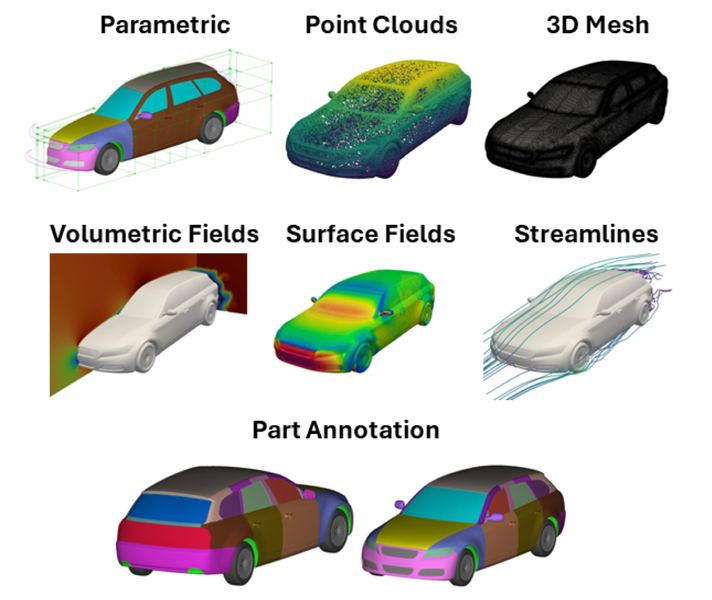8,000 open source models for sustainable mobility
More efficient car designs with AI

Carmakers often invest many years in the design of a vehicle. This starts with simulations using 3D models before the most promising designs are tested in the wind tunnel. The details and specifications of these tests, including the aerodynamics of a certain design, are generally not made public. Consequently, progress in such areas as fuel efficiency or the range of electric vehicles tends to be slow and limited to the individual companies.
Car designs using generative AI
As a starting point for DrivAerNet++, the researchers used 3D models from 2014 provided by Audi and BMW and representing various car body shapes. In addition, 26 parameters such as length, underbody characteristics and windshield angle were systematically adjusted. The team also conducted complex airflow simulations to calculate wind resistance for the various generated car designs.
The goal was to use DriverAerNet++ as training data for generative AI. This allows enormous quantities of data to be analyzed in seconds to generate innovative designs. Although tools of this kind already exist, the necessary data were not freely accessible in the past.
Improved fuel efficiency and progress with electric cars
Angela Dai, a professor of 3D Artificial Intelligence at TUM, says: “Our dataset can be used as an extensive library in order to generate new designs quickly with the aid of AI models with the goal of designing more fuel efficient cars in the future or improving the range of electric vehicles.”
Mohamed Elrefaie, first author of the study, says: “This dataset lays the foundation for the next generation of AI applications in automotive design, promotes efficient design processes, reduces R&D costs and will promote progress toward a more sustainable automotive future.”
M. Elrefaie, F. Morar, A. Dai, and F. Ahmed. DrivAerNet++: A large-scale multimodal car dataset with computational fluid dynamics simulations and deep learning benchmarks. In Thirty-eigth Conference on Neural Information Processing Systems Datasets and Benchmarks Track, 2024.
- Angela Dai is a core member of the Munich Institute of Robotics and Machine Intelligence (MIRMI), Munich Data Science Institute (MDSI) and Munich Center for Machine Learning (MCML).
- The Professorship of 3D Artificial Intelligence is part of the TUM School of Computation, Information and Technology.
- Video of the publication
- Press release from MIT
- Research on Artificial Intelligence and Mobility at TUM.
Technical University of Munich
Corporate Communications Center
- Julia Rinner
- julia.rinner@tum.de
- presse@tum.de
- Teamwebsite
Contacts to this article:
Prof. Dr. Angela Dai
Technische Universität München
Professorship of 3D Artifical Intelligence
angela.dai@tum.de



